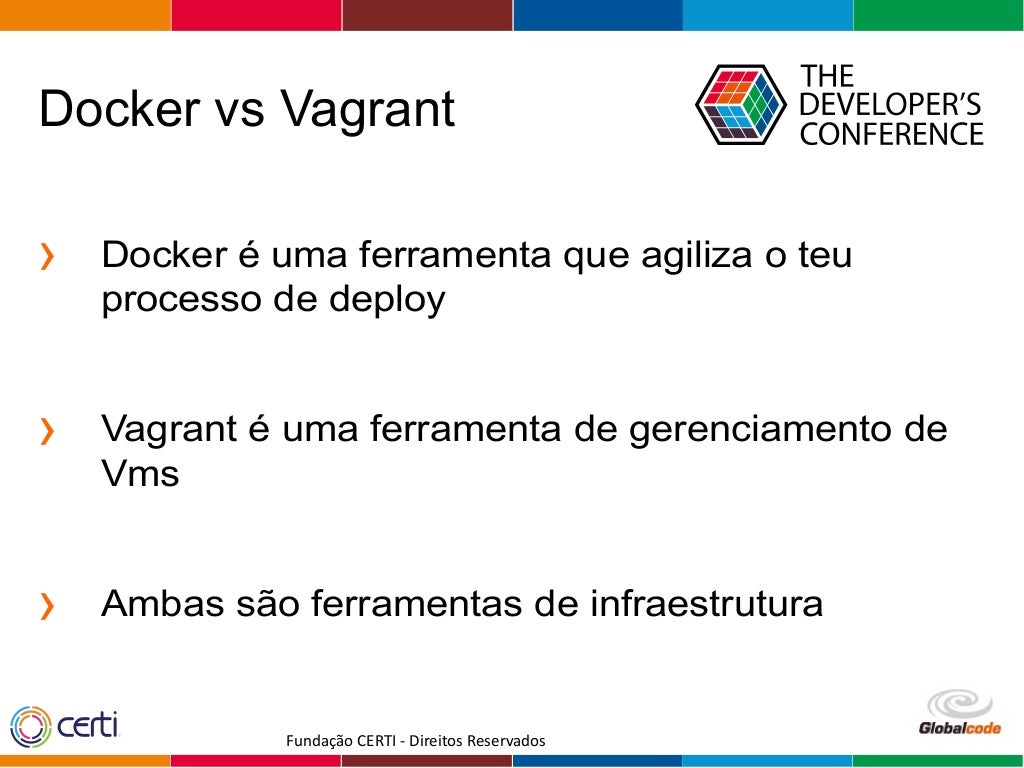

Docker: security levelsĪs Docker containers use the kernel of the system they run on (be it Linux, Windows or MacOS kernel) there is a possibility that malicious code run within the container will affect other containers on this machine as well as the host operating system. Thus said, containers usually weigh several dozens of MBs and multiple containers with separate apps can run atop a single virtual machine. For Docker containers, this is possible using Kubernetes and dockercompose command. While a single container is created to run a single app, one Vagrant VM can run multiple interacting apps at once. Instead of creating a virtual computer atop real hardware, a Docker container is a code package with everything needed to run the app code inside.
Docker vs vagrant software#
These VM’s work on top of real hardware servers but emulate the virtual infrastructure the developer needs - from OS all the way down to libraries and binaries of the required software - and ensure the app works the same no matter the underlying hardware and software, as long as it runs in the VM.ĭocker is an open-source platform that allows isolating the apps within code containers similar to Linux Containers (LXC), though Docker moved from LXC to containerd to enable industry-wide standardization. Vagrant from Hashicorp is a solution that enables quick configuration and provisioning of virtual machines (VMs) that help to isolate the application in its own development environment. Docker to highlight which of them is better for enabling the software development. They have different:Ĭomparing Vagrant vs Docker for developmentīoth Docker and Vagrant can provide virtualized development environments, but they approach the problem very differently. While acting similarly, these tools differ quite a lot. There are two main DevOps tools that enable such functionality: Docker or Vagrant. The solution to this issue is known and has been around for a while: the developers must the software development environments identical to the production ones, so the app code behaves exactly the same way in the development, during testing, staging and in production.


This sometimes leads to uncovering of the unexpected bugs by end users and, worst of all, the developers have to pay much effort to reproduce and fix them. Such a situation is actually quite widespread, due to the vast variety of hardware configurations, OS’es, software versions and other variables across the application sphere of usage. “Works on my computer” is the byword of software development describing the situation when the application behaves unexpectedly, as the real production environment conditions differ from the development and staging ones. What are the pros and cons of Vagrant and Docker? However, Vagrant is still a viable option. Docker: which is better for software development environments? Comparison of Docker and Vagrant in productionĭocker took the software development industry by storm, greatly changing the way we develop the software.


 0 kommentar(er)
0 kommentar(er)
